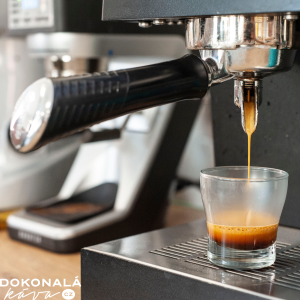Now Reading: Exploring the Differences in French and Italian Bread Baking
-
01
Exploring the Differences in French and Italian Bread Baking

Exploring the Differences in French and Italian Bread Baking
Bread is a culinary cornerstone in both French and Italian cultures, yet the baking techniques, flavors, and even textures are quite distinct. Let’s dive into the unique characteristics of French and Italian bread, understanding what sets them apart and why each holds a special place on the dining table.
In France and Italy, bread is more than just food; it symbolizes heritage and tradition. French bread is often associated with elegance and precision, while Italian bread reflects the rustic, hearty spirit of the countryside.
Flour Varieties and Their Influence on Bread
One of the foundational differences lies in the flour used. French bakers typically use Type 55 wheat flour, which has a moderate protein content and results in a tender crumb. In contrast, Italian bakers lean towards Type 00 flour, which is softer and lighter, perfect for delicate Italian bread and pizza dough.
Water Quality and Mineral Content
Water composition varies by region and significantly affects the texture of the bread. French water is often high in minerals, which contribute to a slightly firmer crust. Italian water tends to have a softer quality, lending itself to a more pliable and airy bread.
French bread baking traditionally relies on commercial yeast, which gives the bread a consistent rise and an even texture. Italian bread, however, often uses natural yeast or biga, a type of starter, adding complex flavors and a slightly sour taste.
Perhaps the most iconic French bread, the baguette, follows a strict recipe in France: minimal ingredients of flour, water, salt, and yeast. The result is a crusty, airy loaf with an unmistakable flavor and texture that’s light yet chewy.

Bread Shapes and Their Meanings
Shape is essential in bread, and both countries have distinct traditions. French baguettes are long and slender, while boules are round and rustic. Italy offers an array of shapes, from the long ciabatta to the plump, round pancetta, each with regional significance.
French bread is known for its crisp, golden crust, achieved by baking in steam-filled ovens. Italian bread generally has a softer crust, and Italian bakers often bake with a higher hydration dough, resulting in a less brittle exterior.
French breads are often light and airy, with an open crumb structure due to their high-hydration dough. Italian breads, particularly ciabatta, also have a porous structure but lean toward a slightly denser, chewier crumb.
Olive oil is a staple in Italian baking, used to enrich and flavor the dough, especially in focaccia and ciabatta. This adds moisture and gives Italian bread a softer, more luxurious texture, distinguishing it from its French counterparts.
French bakers tend to use moderate salt levels to let the wheat’s natural flavors shine. Italian breads often incorporate a slightly higher salt content, enhancing the flavor profile and balancing well with olive oil.
While both cuisines have their enriched doughs, they are distinct. France’s brioche is buttery and slightly sweet, a rich addition to breakfast or dessert. Italy’s panettone, a festive bread, is known for its airy texture, studded with dried fruit and often served during the holidays.
In France, bread is a daily staple, served with almost every meal. The baguette is sliced and eaten plain, with cheese, or dipped into sauces. Bread is even included in breakfast, typically with butter and jam.
In Italy, bread plays a crucial role in meals but is often a complement rather than a centerpiece. Italians use bread to mop up sauces in dishes like pasta and soup, adding a satisfying end to a meal.
People ignore design that ignores people. Good design is all about making other designers feel like idiots because that idea wasn’t theirs. Design is the conscious effort to impose a meaningful order.
Andrew Bennett
French breads, particularly baguettes, are best consumed fresh and usually don’t keep well due to their minimal ingredients. Italian breads, especially those with olive oil, tend to have a slightly longer shelf life and stay moist longer.
Both French and Italian bakers use sourdough but with subtle variations. French pain de campagne (country bread) uses a sourdough starter, creating a rustic loaf with a slight tang. Italy’s pane toscano is also sourdough-based but is traditionally salt-free.
France’s regional breads are as diverse as its landscape. Breads like Pain Poilâne in Paris and Fougasse from Provence showcase unique flavors and techniques, with each region embracing its local ingredients and methods.
Modern Innovations in Bread Baking
Modern French and Italian bakers are experimenting with new flours, like spelled and rye, and incorporating seeds and grains. This fusion of tradition and innovation is giving rise to breads that honor heritage while embracing contemporary tastes.
French and Italian breads each carry a rich history and remain beloved worldwide. From the crispy baguette to the soft focaccia, these breads are a testament to centuries-old techniques that continue to captivate bread lovers and inspire bakers globally.
Both French and Italian breads offer unique flavors, textures, and traditions. Whether you prefer the elegant crispness of a baguette or the rustic chew of a ciabatta, the world of bread baking has much to offer, with each country bringing something exceptional to the table.
































